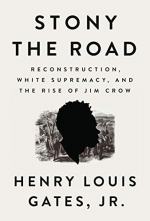
|
| Name: _________________________ | Period: ___________________ |
This test consists of 5 multiple choice questions, 5 short answer questions, and 10 short essay questions.
Multiple Choice Questions
1. What was NOT a trait of an individual fitting the description of a "New Negro" (185)?
(a) Young.
(b) Married.
(c) Educated.
(d) Culturally sophisticated.
2. The concept of the New Negro was used by a subgroup of African Americans between which two years?
(a) 1894 and 1909.
(b) 1872 and 1910.
(c) 1894 and 1925.
(d) 1901 and 1910.
3. Besides including a photograph of lynched men, what other element does the postcard entitled "The Dogwood Tree" (136) include?
(a) A manifesto.
(b) An illustration.
(c) A timeline.
(d) A poem.
4. In what year was the National League of Colored Women founded?
(a) 1952.
(b) 1921.
(c) 1912.
(d) 1894.
5. What was the surname of the first African American to ever earn a PhD?
(a) Macon.
(b) Washington.
(c) Bowen.
(d) Gabbard.
Short Answer Questions
1. In what year did Nat Turner lead a slave rebellion in Southampton County, Virginia?
2. What kinds of graphs were used in the World's Fair exhibition to indicate the social and economic progress of African Americans since Emancipation?
3. In what year was the NAACP founded?
4. The act of lynching was actually used to frighten African American men out of taking what action?
5. How many medals, including bronze, silver, and gold, did the exhibition of African American images at the World's Fair win?
Short Essay Questions
1. Discuss the significance of Booker T. Washington's 1895 Atlanta Compromise speech.
2. What element caused the New Negro movement to emerge?
3. What percentage of African Americans lived in the South by 1900?
4. What examples does Gates provide for his claim that the "postwar American collective unconscious" was for a time "projected onto a host of everyday, ordinary consumer objects" (132)?
5. For what reasons does Gates consider a particular Mississippi Supreme Court Justice's words about African Americans in 1898 so significant?
6. In what way does Gates acknowledge the problematic nature of some aspects of the New Negro movement?
7. Explain the concept of the Talented Tenth advocated by W.E.B. Du Bois.
8. Which aspect of W.E.B. Du Bois's ideas about race does Gates find problematic?
9. For what reason does Gates refer to Homi K. Bhabha's discussion of stereotypes?
10. Explain the concept of xenophobic masking.
|
This section contains 1,160 words (approx. 4 pages at 300 words per page) |

|




